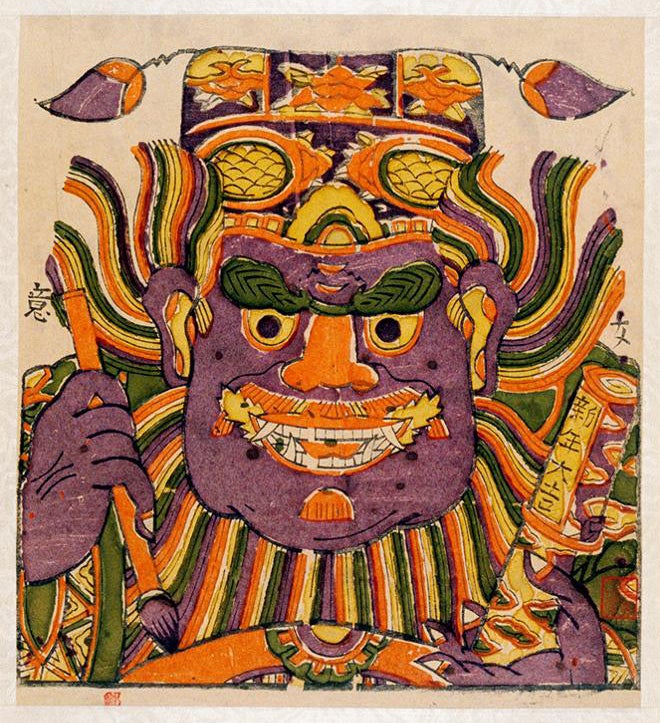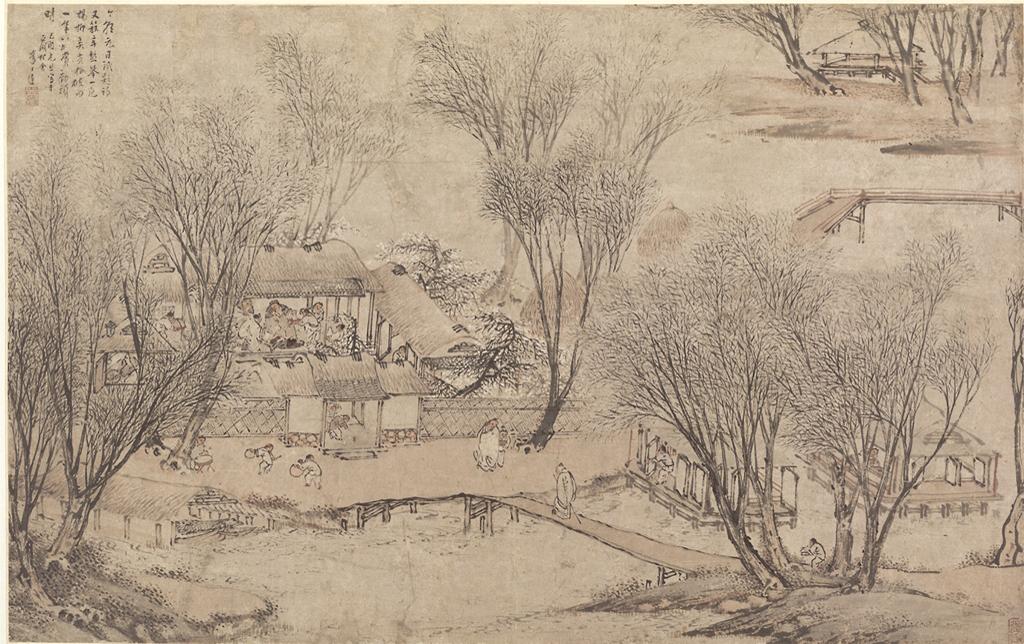On this day: Happy Chinese New Year – Year of the Dragon!

Shi Rui, Greeting the New Year, 15th Century. Data from: The Cleveland Museum of Art
The Year of the Dragon begins January 23rd, marking the end of the winter season. The traditional Chinese calendar is based on a combination of lunar and solar movements; the year begins with the night of the first new moon of the lunar New Year and ends on the 15th day. This year is signified by the dragon, the bringer of rain and good luck, and the only mythical animal in the Chinese zodiac.

Great Luck in the New Year (Zhong Kui, the Demon Queller), late 19th—early 20th century, Zhengzhou, Henan Province. Muban Foundation Collection. Image and original data from Asian Art Photographic Distribution Project (AAPD), University of Michigan.
The Chinese New Year is a time for family unity and reconciliation. Chinese families gather on New Year’s Eve for a feast to celebrate harmony and honor the spirits of ancestors. Other traditions include cleaning the house to sweep away bad luck and make way for good luck, decorating windows and doors with red cut paper decorations, and giving family children money in red paper envelopes (red, corresponding with fire, symbolizes happiness and good fortune). The last day is celebrated with the Lantern Festival, a tradition that includes hanging lanterns outside each house to help the dead find their way home.

Li Shida, New Year’s Day in a Village at Stone Lake, 1609. Data from: The Cleveland Museum of Art
The images illustrating this post include a woodblock print of Zhong Kui, the Demon Queller, called “Great Luck in the New Year,” from the Asian Art Photographic Distribution (AAPD) (University of Michigan), and a 17th century painting of New Year’s Day in a village by Li Shida and a calligraphic 15th century painting greeting the New Year by Shi Rui, both from the Cleveland Museum of Art. For more information on the ARTstor Digital Library’s extensive collections of Chinese art, architecture, and culture, view our ARTstor Is… Asian Studies post.